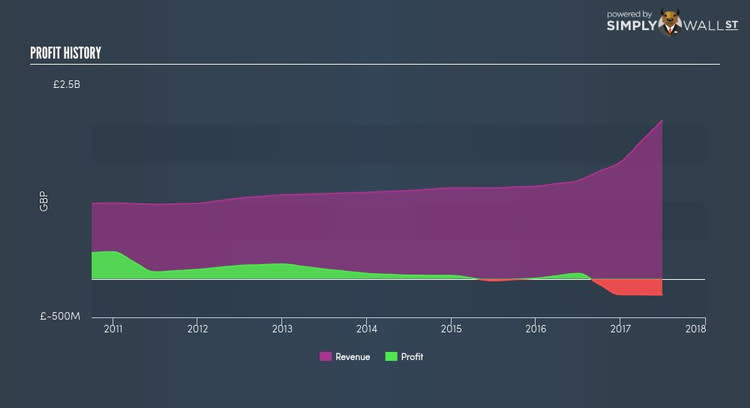Should You Be Concerned About Ladbrokes Coral Group plc’s (LSE:LCL) Risks?

If you are a shareholder in Ladbrokes Coral Group plc’s (LSE:LCL), or are thinking about investing in the company, knowing how it contributes to the risk and reward profile of your portfolio is important. The beta measures LCL’s exposure to the wider market risk, which reflects changes in economic and political factors. Not every stock is exposed to the same level of market risk, and the market as a whole represents a beta of one. Any stock with a beta of greater than one is considered more volatile than the market, and those with a beta less than one is generally less volatile.
View our latest analysis for Ladbrokes Coral Group
What does LCL's beta value mean?
Ladbrokes Coral Group's beta of 0.55 indicates that the stock value will be less variable compared to the whole stock market. This means the stock is more defensive against the ups and downs of a stock market, moving by less than the entire market index in times of change. Based on this beta value, LCL appears to be a stock that an investor with a high-beta portfolio would look for to reduce risk exposure to the market.
Could LCL's size and industry cause it to be more volatile?
A market capitalisation of GBP £2.34B puts LCL in the basket of established companies, which is not a guarantee of low relative risk, though they do tend to experience a lower level of relative risk compared to smaller entities. However, LCL operates in the hotels, restaurants and leisure industry, which has commonly demonstrated strong reactions to market-wide shocks. Therefore, investors can expect a low beta associated with the size of LCL, but a higher beta given the nature of the industry it operates in. This is an interesting conclusion, since its industry suggests LCL should be more volatile than it actually is. There may be a more fundamental driver which can explain this inconsistency, which we will examine below.
Is LCL's cost structure indicative of a high beta?
An asset-heavy company tends to have a higher beta because the risk associated with running fixed assets during a downturn is highly expensive. I test LCL’s ratio of fixed assets to total assets in order to determine how high the risk is associated with this type of constraint. Since LCL’s fixed assets are only 6.87% of its total assets, it doesn’t depend heavily on a high level of these rigid and costly assets to operate its business. Thus, we can expect LCL to be more stable in the face of market movements, relative to its peers of similar size but with a higher portion of fixed assets on their books. Similarly, LCL’s beta value conveys the same message.
What this means for you:
Are you a shareholder? You may reap the benefit of muted movements during times of economic decline by holding onto LCL. Its low fixed cost also means that, in terms of operating leverage, its costs are relatively malleable to preserve margins. I recommend analysing the stock in terms of your current portfolio composition before increasing your exposure to the stock.
Are you a potential investor? You should consider the stock in terms of your portfolio. It could be a valuable addition in times of an economic decline, due to its low fixed cost and low beta. However, I recommend you to also look at its fundamental factors as well, such as its current valuation and financial health to assess its investment thesis in further detail.
Beta is one aspect of your portfolio construction to consider when holding or entering into a stock. But it is certainly not the only factor. Take a look at our most recent infographic report on Ladbrokes Coral Group for a more in-depth analysis of the stock to help you make a well-informed investment decision. But if you are not interested in Ladbrokes Coral Group anymore, you can use our free platform to see my list of over 50 other stocks with a high growth potential.
To help readers see pass the short term volatility of the financial market, we aim to bring you a long-term focused research analysis purely driven by fundamental data. Note that our analysis does not factor in the latest price sensitive company announcements.
The author is an independent contributor and at the time of publication had no position in the stocks mentioned.

